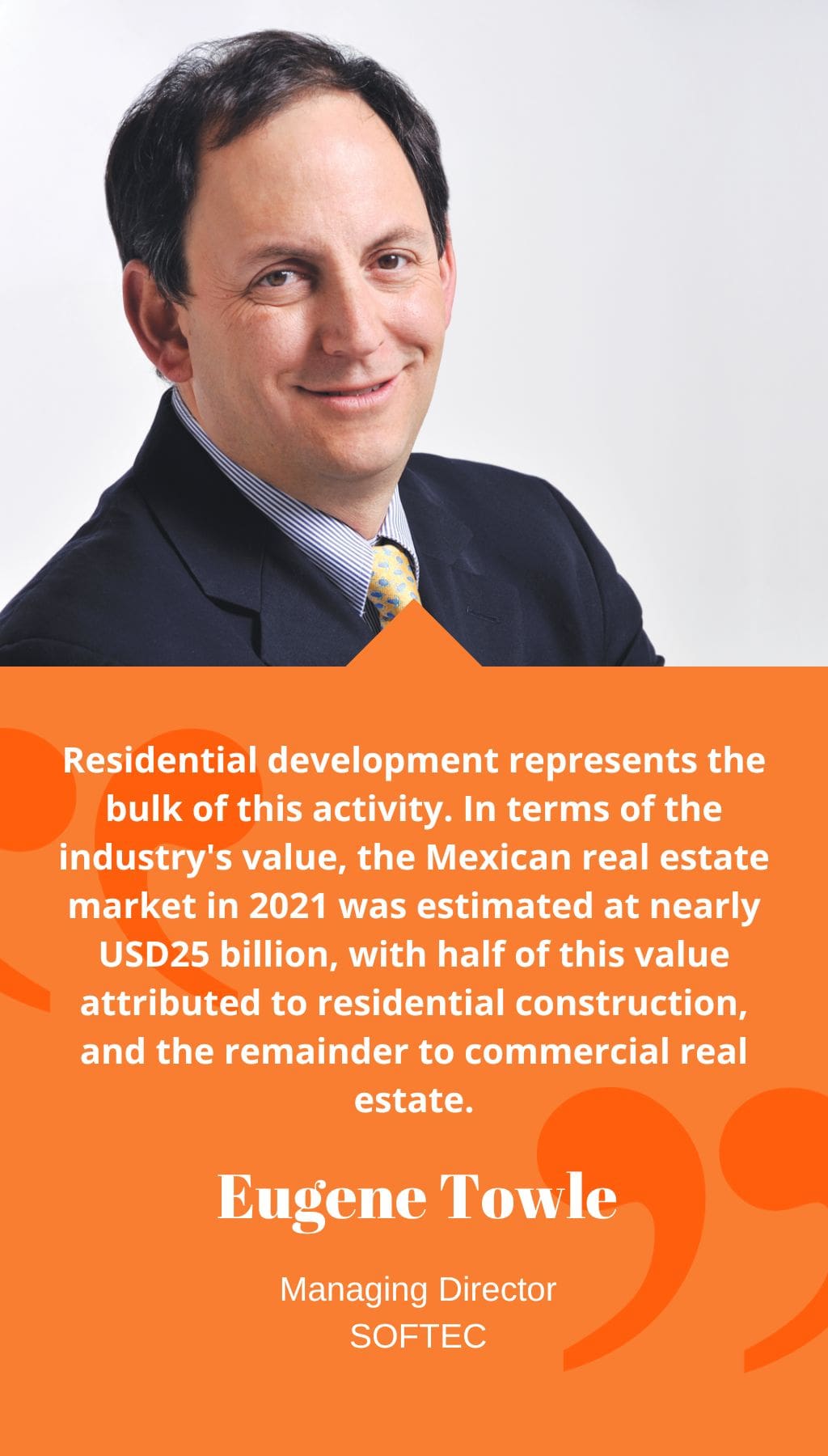
- Mexico | 29 June 2023

Why does Softec prioritize residential projects?
We place substantial emphasis on residential projects due to the sheer volume of development activity in this segment. Each year, approximately 5,000 to 6,000 new housing projects are evaluated for initiation or development. In contrast, evaluations for other sectors like retail centers, hotels, office buildings, and industrial parks amount to far fewer—about 200 retail centers, 50 to 60 hotels, 20 to 50 office buildings, and five to 10 industrial parks. Residential development represents the bulk of this activity. In terms of the industry’s value, the Mexican real estate market in 2021 was estimated at nearly USD25 billion, with half of this value attributed to residential construction, and the remainder to commercial real estate.
Why has Softec noticed a decline in new housing projects?
Over the past four years, we’ve observed a contraction in the initiation of new housing projects. Real estate development requires significant capital, and there’s been limited investment in land acquisition and project titling. Investors have been cautious about investing in this market. Curiously, despite this contraction, there’s been heightened demand for new homes, with record-high origination of new mortgages, particularly for homes in the middle and upper markets. During market expansions, developers tend to build based on regulations, available funding, and permissible density without adequately considering consumer preferences. This mismatch can lead to a perception of oversupply in the housing industry, which isn’t entirely accurate. In reality, there’s a scarcity of inventory, and new homes are becoming scarce. Mexico, with its relatively youthful population, generates a demand for approximately one million new homes annually. However, in the peak year of real estate development in 2006/2007, only about 600,000 homes were built. In 2021, approximately 230,000 new homes were constructed, which represents just 20% of the million-unit market. This indicates a misreading of the market and highlights the opportunity to accurately understand consumer demands and preferences.
What are the primary trends in today’s real estate market?
Our focus is on understanding and addressing the needs of our clients and users. We are witnessing a shift towards consumer-centric approaches. In residential sectors, consumers seek amenities such as high-speed internet, designated spaces for work or study, and improved balcony features in apartments. There’s also a demand for adaptable spaces that can serve multiple purposes throughout the day. In the office space, we anticipate a redefinition of spaces to accommodate more meeting rooms, training areas, and facilities for client interactions. Remote workspaces will become more prevalent for various projects. Companies must be mindful of maintaining team cohesion and support structures. Regarding hotels, the expected demand over the next 15 years ranges from 260,000 to 300,000 new hotel rooms. The current inventory stands at about 300,000 rooms, indicating a potential doubling of hotel stock over the next 15 years. Interestingly, recent projects initiated in 2020-2021 are selling at a much faster rate compared to older inventory, highlighting a trend in consumer preference for newer offerings.














